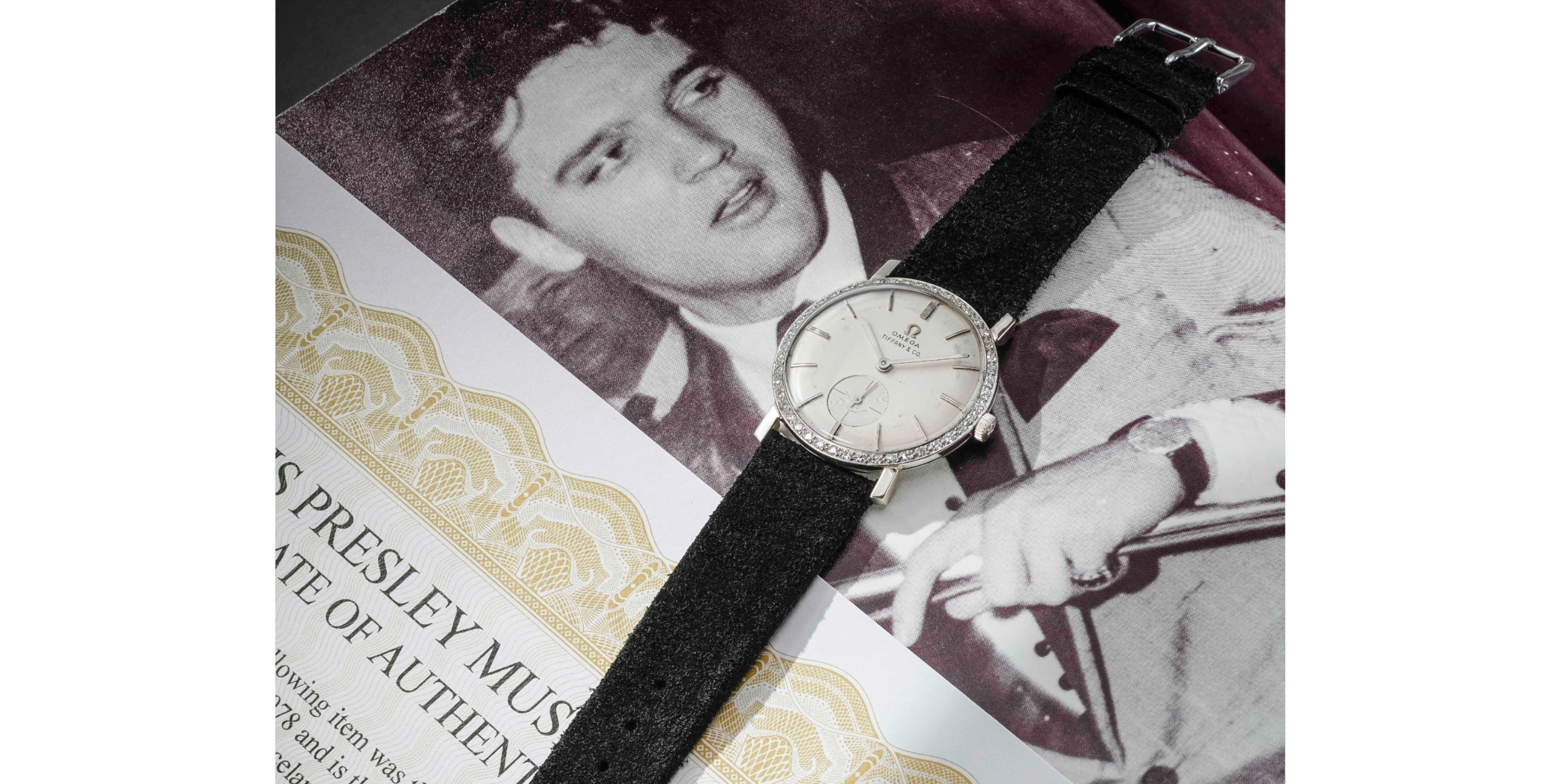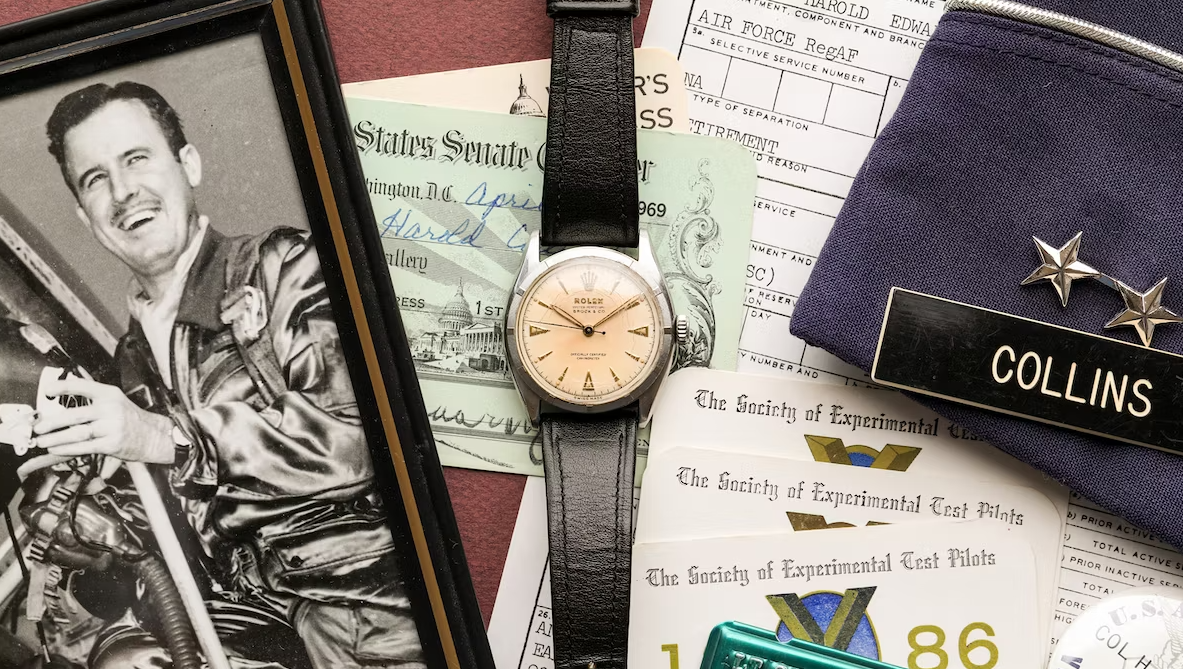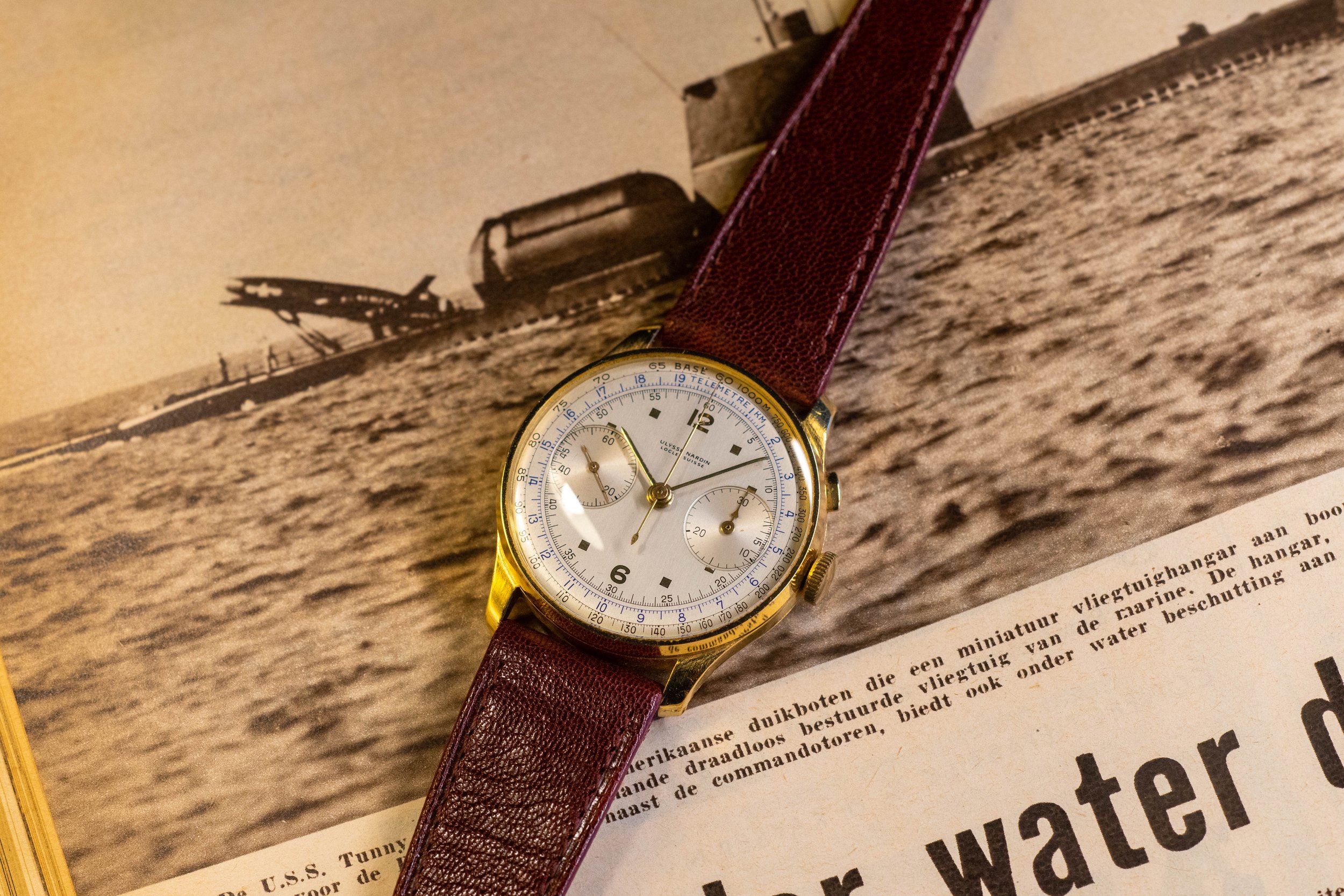Restoring provenance: The “Panos Pladelis” Ulysse Nardin Chronograph
“Panos Pladelis” Ulysse Nardin Chronograph
In collecting there are several important factors that come to play. For one it might be the brand, the size, the era, the condition etc. All options that can have huge impacts on value which translates to the collect-ability of said watch.
A factor that I particularly like is its provenance. Who bought the watch and why? A mystery that is most likely never to be solved but some watches do offer the option to find out.
For this item I’d like to take you with me on the journey of restoring the provenance of a very special Ulysse Nardin Chronograph that I estimate as something made in the 1940’s.
Provenance
What is provenance? The history of ownership of a valued object. More specifically in watch collecting we refer most of the time to provenance with the story of the owner and one specific watch.



Ulysse Nardin Chronograph
So taking it back to our chronograph by Ulysse Nardin. A chronograph in a 18k yellow gold case in a large 38mm diameter to house the monopusher Valjoux 22. Seeing the watch we can identify a few important factors.
The era it was made: Seeing the design I would date it as a watch made in the 1940’s. The watch has a serial number but there’s no extract possible from Ulysse Nardin to exactly date the watch.
The condition: the watch is in a very good condition. This tells us that it isn’t worn a lot or just taken good care of. Also the watch has two or three watchmaker service marks which isn’t common these days so it has seen some maintenance in it’s life. Indicating it might have been worn and taken care of by the original owner.
Quality: This chronograph at the time was one of the highest of grades of wrist watches available. Ulysse Nardin made magnificient watches. A chronograph movement improved by UN and housed in a solid 18k case. At the time this would have been very costly. A watch you don’t “just” gift or buy.
With this information you will never find out it’s history, but luckily there’s a story on the back!
Panos Pladelis
En souvenir de
vos services rendus
A La Suisse
Office de Guerre
Pour Les Transports
Berne 1942
Which translates to “Panos Pladelis - in memory of your services to the Swiss War Office for Transport, Bern 1942”
This inscription tells us a story which raises more questions but would also open some new leads to pursue.
Restoring provenance
This case back tells us two important leads to follow up which are; Who or what is Panos Pladelis? and the Swiss War Office for Transport.
Panos Pladelis
With 21th century tech we ask Google to help us. Googling “Panos Pladelis” gives a very limited number of results but results that match the era.
Source 1: The Official Chronology Of The US Navy In WorldWar II
A chronology of the US Navy mentioning a specific event in 1942:
March 20, Fri. Atlantic Unarmed U.S. tanker Oakmar is shelled by German submarine U-71 at 36°21'N, 68°50'W, and abandoned; submarine R-6 (SS-83) is sent to her assistance. U-71 torpedoes Oakmar and shells her until she sinks. Six men perish in the abandonment; the remainder (30 men) are rescued by Greek steamship Panos Pladelis.
Source 2: U-Boat Archives
Mentions of a SS PANOS PLADELIS assiting the crew of the SS Oakmar.
1449: SS OAKMAR (U. S. Cargo 5766 tons) SSS at 36-22 N., 68-50 W. 10 knots speed, course North. R6 dispatched to assist. Submarine later reported gaining on vessel.
1505: Teletype received that the S. S. PANOS PLADELIS is expected to arrive Tuesday with 30 survivors from U. S. vessel OAKMAN (see our 1449 of March 20th)
The location of the events in 1942. 36°21'N, 68°50'W
With these findings we assume Panos Pladelis was a steamship. Might the owner also carry that same name?
Swiss War Office for Transport
The story of the Panos Pladelis is a logical explenation so far. Both from 1942, a story worthy of the watch but why handed out by the Swiss War Office for Transport and written in French for a Greek Vessel helping the US?
To start of what is the “Office de Guerre Pour Les Transports” (Swiss War Office for Transport)?
Source 1: Historical Dictionary of Switzerland: War economy
In this article they mention (translated): In addition to land transport, the organization of high seas navigation under the Swiss flag came under the responsibility of the Transport War Office from 1941. The War Welfare Office was dedicated to war-related problems in the area of social insurance, health measures, as well as assistance to some of the refugees.
preliminary conclusion
The efforts of restoring provenance usually turn to an anti-climax or a very long “in progress”. Further steps to be taken are contacting the Swiss authorities that are derivatives of the Swiss War Office for Transport and museums like the National Museum of Switzerland.



